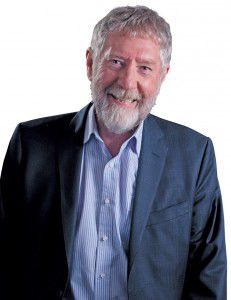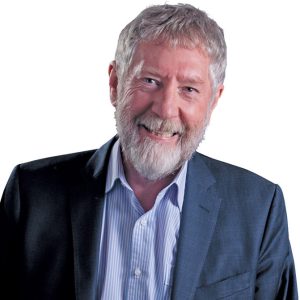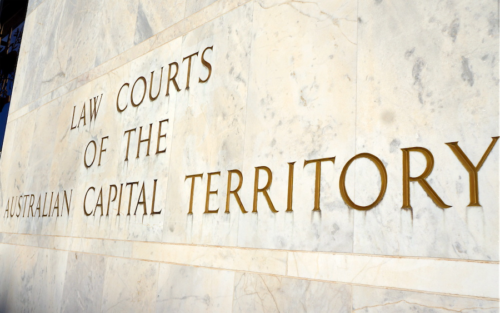WHAT’S going on? A jail built just six years ago is full. No! It is overflowing.

Should the magistrates and judges wear the opprobrium or should the legislature shoulder the blame? The overflowing Alexander Maconochie Centre is a prison that manages minimum to maximum security prisoners as well as detainees who are awaiting trial (and are innocent until proven guilty). It is a much more complex organisation than those in multiple prison jurisdictions.
“In many cases, imprisonment is just the wanton infliction of gratuitous punishment by an unthinking legislature and a reflexive judiciary,” according to Prof Mirko Bagaric, dean and head of the School of Law at Deakin University.
It is time to look at ourselves, our expectations and our attitudes, the misdirection of expenditure and the continuation of medieval practices that make matters worse rather than better.
There is no doubt that some people do need to be incarcerated to protect the rest of the community. People who are violent and those we have a good reason to fear are appropriate examples. People who have committed sexual assaults are another. However, more than a third of prisoners are incarcerated for non-violent offences.
Iceland, Japan and Finland incarcerate at a rate about a third of that in Australia and do not have increasing rates of imprisonment. These are not countries that anyone would consider inherently dangerous. If anything, the opposite is true. They employ a range of alternative and innovative techniques to punish offenders. The International Centre for Prison Studies keeps careful statistics on 224 countries and shows that Australia is the 44th highest incarcerating country.
The ABS report, “Prisoners in Australia”, shows that our country had around 34,000 people in prisons in December, an increase of 10 per cent over the previous 12 months. The incarceration rate is now 186 people for every 100,000 of our population. In the ACT in 2002, when our offenders were held in NSW jails, the rate of incarceration was 96.3 per 100,000. By December, the rate had reached 130.4 per 100,000 and still climbing. This is higher than Tasmania and on a par with Victoria.
What these figures do not illustrate is the length of time of incarceration. In the last few decades governments of both political persuasions have responded to community concerns about law and order by increasing penalties. Some in Australia have also introduced abhorrent policies such as “three strikes and you’re in” that lead to compulsory incarceration removing the power of magistrates to explore alternatives to imprisonment. No wonder our jails are overcrowding.
Are there alternatives to imprisonment? Prof Bagaric’s main research priority is to encourage governments “to implement an evidence-based and normatively sound sentencing system, which secures four objectives: to reduce crime; to punish criminals appropriately; to minimise the cost of the system and to ensure the system does not violate important moral standards”.
Some suggestions made for punishment of non-violent prisoners include much greater use of home detention using ankle bracelets, for example, and modern satellite-location techniques.
For people who commit fraud and other white-collar crime, introduction of bans from owning or controlling any significant property for a period of time – or even a lifetime for the most serious offenders. After all, greed is the motivation for this sort of crime.
Perhaps a different approach might also help address recidivism. The ACT has the highest proportion of prisoners with prior imprisonment of all Australian jurisdictions.
Whatever the case, the law-and-order approach of constantly increasing penalties is a failed policy. The ACT has been at the forefront of law reform in many areas. With appropriate attention to evidence, an examination of the policies of low-incarcerating countries to assess where ideas can be extrapolated to Australia, a more humanitarian approach might just be possible. It could go hand in hand with making savings. The savings could be used for treatment, education and training and creating jobs.
Surely some leadership in this area combined with some political courage – and perhaps even some bipartisanship – is not beyond the wit of our leaders.
Michael Moore was an independent member of the ACT Legislative Assembly (1989 to 2001) and was minister for health.
Figures/information comes from:
- ABS 4517.0 – Prisoners in Australia, 2014 http://www.abs.gov.au/AUSSTATS/abs@.nsf/DetailsPage/4517.02014?OpenDocument
- International Centre for Prison Studies http://www.prisonstudies.org/
Prof Mirko Bagaric, Dean and Head of School of Law at Deakin University http://theconversation.com/prisons-policy-is-turning-australia-into-the-second-nation-of-captives-38842?utm_medium=email&utm_campaign=Latest+from+The+Conversation+for+10+April+2015+-+2626&utm_content=Latest+from+The+Conversation+for+10+April+2015+-+2626+CID_fa4a5c2ccd3a2801bce8b7ad472a83bc&utm_source=campaign_monitor&utm_term=Prisons%20policy%20is%20turning%20Australia%20into%20the%20second%20nation%20of%20captives
Who can be trusted?
In a world of spin and confusion, there’s never been a more important time to support independent journalism in Canberra.
If you trust our work online and want to enforce the power of independent voices, I invite you to make a small contribution.
Every dollar of support is invested back into our journalism to help keep citynews.com.au strong and free.
Thank you,
Ian Meikle, editor





Leave a Reply